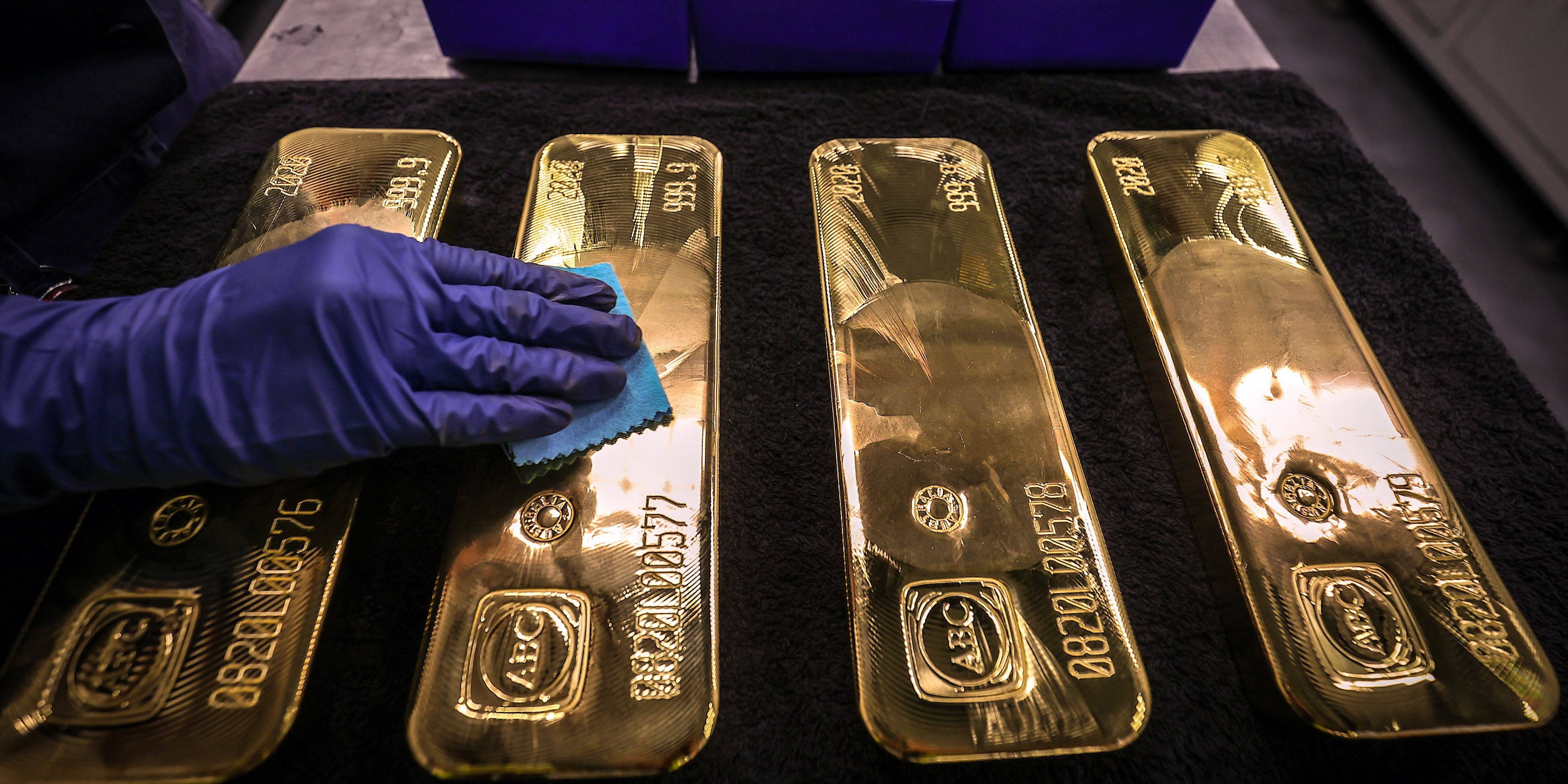Europe 1 with AFP 11:20 a.m., April 1, 2024
The price of gold broke a new historic record on Monday at more than $2,265 per ounce. The previous record dates back several days. The precious metal is experiencing renewed interest this year, as banks begin to suggest that their interest rates will decrease soon.
The price of gold broke a new historic record on Monday at more than $2,265 per ounce, with investors still convinced that the American central bank (Fed) will lower its rates this year. Gold reached $2,265.73 per ounce, according to Bloomberg News. The previous record dates back several days. The precious metal is seeing renewed interest this year, as the US Federal Reserve (Fed) has hinted it will cut interest rates this year.
Certainly the PCE index, favored by the Fed and published on Friday, confirmed a rebound in inflation in the United States in February, to 2.5% year-on-year in February, compared to 2.4% in January. But “we are not going to overreact because the data from the last two months are higher” than hoped, assured Jerome Powell, President of the Fed who wants to bring inflation back to 2% over time. The American central bank therefore raised its rates 11 times between March 2022 and July 2023. In June 2022, American inflation had reached a peak at 9.1%.
Conflicts drive up gold prices
“We don't need to rush to lower rates, we can wait,” Jerome Powell nevertheless added. The risks of an extension of the conflict between Israel and Hamas are also pushing prices up. The Israeli army said on Sunday that it had "eliminated" a Hezbollah leader in a strike in southern Lebanon, two days after killing another leader of this powerful Lebanese armed movement in a raid in the same region.
For almost six months, daily violence has pitted the Israeli army against Hezbollah on the Israeli-Lebanese border, which claims to support the Palestinian Islamist movement Hamas in its war against Israel in the Gaza Strip. Investors are also closely following developments in the war in Ukraine. As bullion does not earn any interest, it becomes more attractive when central banks lower the cost of borrowing.

